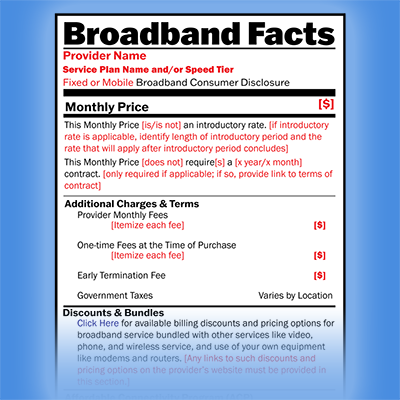High-Speed Internet Solutions: Comparing Viasat, Starlink, and HughesNet
Discover the best high-speed internet solutions for rural areas in our comprehensive comparison of Viasat, Starlink, and HughesNet. Learn about plans, speeds, costs, and which satellite provider is right for you.

Affordable Viasat Pricing, HughesNet Plans, Starlink Deals!
Connectivity is the lifeblood of modern society, setting the stage for countless innovations and daily conveniences.
From telemedicine appointments to virtual classrooms, reliable internet service has become as essential as electricity—especially in rural expanses where options are limited.
Satellite Internet Demystified
Satellite internet beams data directly from space, circumventing the terrestrial constraints of traditional DSL, cable, or fiber-optic systems. This technology excels where ground-based infrastructure is scant or non-existent, catapulting remote areas into the digital age with relative ease. Using geostationary or low Earth orbit satellites, providers like Viasat, HughesNet, and Starlink offer a conduit to high-speed internet, even when you're miles from the nearest cell tower or cable hookup. Now, let's unravel how these celestial marvels keep you connected, irrespective of your earthly coordinates.
How it Works
Satellite internet connects users to the web from orbit, bypassing the need for ground-based cabling and infrastructure.
Satellite signals traverse roughly 72,000 kilometers round-trip during a typical internet request and response.
By locking onto a satellite's signal, a dish at your location transmits and receives data, allowing for internet connectivity almost anywhere on the globe.
Inherently, latency is higher compared to terrestrial internet, reflecting the signal's long journey, yet technological improvements continue to mitigate this challenge.
Broadband and 5G Alternatives
Satellite internet providers present critical alternatives to terrestrial broadband and emerging 5G technologies.
- DSL (Digital Subscriber Line) - Utilizes existing telephone lines for internet, optimal for areas without cable service.
- Fixed Wireless Internet - Offers internet via radio waves from a nearby base station, avoiding the need for cables or phone lines.
- Dial-Up Internet - An older technology that connects to the internet via a telephone line, suitable as a last resort.
- Fiber-Optic Internet - Delivers internet through cables containing glass fibers but has limited availability in rural regions.Areas without broadband or 5G could consider these as viable options.
Satellite internet excels where these services either falter or are absent, bracing the underserved with high-speed connections.
Competing for the Skies
The race for satellite internet supremacy has escalated, fueled by a desire to bridge the digital divide. Industry giants like Viasat, Starlink, and HughesNet leverage advanced orbital technologies to create a net of connectivity, casting wide their digital embrace to reach the remote and technologically underserved. Each provider arms itself with distinct strategies and innovations in a bid to claim the skies, turning what was once a faint signal into a roaring highway of information.
As customer expectations soar towards the stratosphere alongside these satellites, competition becomes less of a battle and more of a "connectivity symphony." Each player, with their own set of strengths and nuances, composes a piece of the broader connectivity landscape. From Viasat's established history of service to Starlink's ambitious low-Earth orbit constellation, these providers aren't just exchanging blows—they're collectively weaving a tapestry of access that has the potential to transform the way we connect, no matter the distance from urban centers.
Viasat's Global Reach
Viasat's satellite network spans across continents, providing vital connections where terrestrial options don't exist. Its fleet of high-capacity satellites offers broadband services to a global audience, demonstrating a commitment to universal access.
Since its inception, Viasat has expanded aggressively, launching satellites that cover vast swathes of the Earth. With each launch, Viasat's reach extends further, promising to deliver internet services even to the most isolated corners of the globe.
Their global strategy focuses on both consumer and enterprise markets, drawing from a rich tapestry of partnerships and technological innovations. This expansion ensures that customers in diverse geographies can tap into the benefits of reliable satellite internet.
By seamlessly integrating with local infrastructure, Viasat collaborates with communities and governments alike to bolster their connectivity goals. Their commitment to creating a more connected world is palpable in their continuous efforts to enhance satellite technologies.
Viasat keeps pushing boundaries, shaping the future of global communications with each orbit. Their dedication to bridging the digital divide is evident, as they work to empower even the most remote communities with high-speed internet.
HughesNet's Established Network
HughesNet stands as a tried-and-true provider of satellite internet, with a longstanding presence in the market.
- Extensive Network: HughesNet operates an extensive network, ensuring coverage across the contiguous United States.
- Experience: Decades of operation have refined their service delivery, making them a veteran in the satellite industry.
- Technology: Utilization of the advanced EchoStar XVII and XIX satellites provides customers with dependable service.
- Plan Options: Multiple service plans cater to varying data needs, with bonus zones for off-peak usage.Their consistency has garnered a loyal customer base that relies on their stable connectivity.
Despite newer entrants, HughesNet remains a steadfast option for those in areas underserved by terrestrial broadband.
Starlink's Innovations
Starlink, operated by SpaceX, is revolutionizing the satellite internet landscape with rapid technological advancements.
- Low Earth Orbit Satellites: Unlike traditional geo-stationary satellites, Starlink's constellation orbits at a much lower altitude.
- Scalable Mesh Network: A growing mesh of satellites increases coverage and capacity.
- High-Speed Connectivity: Starlink's system is designed to deliver high-speed internet with speeds comparable to terrestrial broadband.
- Reduced Latency: The proximity of low earth orbit significantly cuts down latency, benefiting real-time applications.
- Laser Link Technology: Space lasers enable fast data transfer between satellites, bypassing the need for ground relay stations.
- Rapid Deployment: SpaceX's frequent launches expedite network expansion and service enhancements.
This constellation provides vast improvements in speed and reliability compared to traditional satellite services.
Efficient launches and satellite deployment are propelling Starlink to the forefront of high-speed rural internet solutions.
Pricing and Packages Unpacked
Viasat, HughesNet, and Starlink present diverse pricing structures, each with unique selling propositions. Viasat's plans are typically tiered by speed brackets, where higher-priced tiers offer faster internet speeds. HughesNet, on the other hand, primarily varies its plans based on data allowances, with speed remaining relatively constant across different price points.
Starlink emerges as a distinct alternative, foregoing traditional tiered offerings for a "one-size-fits-all" approach. Although initially costlier, Starlink's strategy simplifies the selection process by providing a single set of speeds and an unlimited data policy. This straightforward model appeals to users valuing simplicity and performance over varied options that might require more contemplation to pinpoint the perfect package.
Analyzing Costs and Contracts
When it comes to expenses, hidden fees and stipulations can turn an attractive deal sour. It's essential to scrutinize the finer details of each provider's contract before committing.
Viasat and HughesNet typically bind customers to lengthy contracts, often stretching to two-year commitments. These agreements may include escalating price points after promotional periods expire, requiring users to maintain vigilance over their billing statements. Cancellation policies can be stringent, with early termination fees punishing those who opt-out prematurely. It’s also important to consider installation fees, equipment rentals, or purchases, which can alter the total cost of ownership.
Starlink, however, markets itself as more flexible, with no long-term contracts demanded of its customers. This arrangement allows for greater freedom, particularly for those who may face changes in their living situation or internet needs. Nonetheless, a significant upfront cost for equipment purchase is a barrier that should be factored into any cost-benefit analysis.
Ultimately, when weighing these financial considerations, it is paramount to match your internet habits with the plan details. Peak usage fees, data throttling after reaching limits, and the financial implications of add-on services should all be calculated into your budget. Understanding these nuances will help ensure that your choice of satellite internet provider fits both your needs and your wallet, preventing unwelcome surprises on your monthly bill.
Data Limits and Speeds Compared
Data restrictions vary significantly among providers.
Viasat offers a range of packages that prioritize flexibility. Consumers can select from several service tiers with varying data thresholds, which are designed to accommodate the diverse internet consumption habits of users. Speeds, too, can scale up to 100 Mbps. However, crossing the data cap can result in reduced speeds, impacting the user experience, particularly during peak hours.
Starlink boasts unlimited data but with a caveat.
Users subscribing to Starlink benefit from generally higher base-line speeds—ranging from 50 to 150 Mbps—with presumed no data cap. This does mean, however, that during periods of heavy network congestion, users might experience varying speeds which can impact activities like streaming or gaming.
HughesNet enforces more stringent data limits.
With HughesNet, customers deal with hard data caps. Monthly allowances are set within specific service plans, and once exceeded, reduced speeds are triggered—usually around 1 to 3 Mbps—which can significantly affect internet functionality, though basic browsing remains feasible.
Plans are evolving rapidly; some with incentives for off-peak usage.
The landscape of data limits and internet speeds is ever-shifting, especially as providers compete and technology advances. As of early 2023, some companies are offering bonus data allowances during late-night hours to entice users and alleviate network congestion during peak periods, a tactic that keeps evolving customer needs in focus.
Quality of Service Face-Off
When evaluating service quality, latency is a critical metric that influences user experience. For instance, HughesNet may exhibit higher latency figures, affecting real-time applications like video calls and online gaming.
Starlink, by contrast, leverages low Earth orbit satellites, which can substantially reduce latency and improve overall performance. This becomes apparent in activities that require quick data packet exchange, such as competitive gaming or financial trading.
Meanwhile, Viasat's service, while generally reliable, can suffer from variable speeds during peak usage times, potentially disrupting high-bandwidth activities like HD streaming or large file downloads.
Measuring Internet Performance
Internet performance is more than just speed; it encompasses reliability, latency, and data throughput. These factors combine to define user experience, impacting everything from streaming quality to online gaming responsiveness.
Speed is fundamental, gauging how fast data moves between the web and your devices. It's measured in megabits per second, or Mbps.
However, speed without stability is like a car with a fast engine but poor handling. Consistency (often referred to as 'jitter') is crucial for a smooth online experience.
Then there's latency, signaling the time it takes for data to travel to its destination. This is crucial for activities like video conferencing and gaming.
Throughput, or the volume of data transferred successfully, is another key metric. It reflects the actual data flow over your connection, which can be lower than your maximum speed due to various factors.
Finally, measure your connection's quality at different times to identify patterns. This helps anticipate performance dips and plan high-bandwidth activities accordingly.
Real-Time Use: Streaming and Gaming
Grasping the intricacies of real-time use is essential when discussing satellite internet. For avid streamers and gamers, even a millisecond can make a difference.
For streaming aficionados, a seamless experience hinges on a robust and uninterrupted signal. Satellite services vary, and while Viasat and HughesNet have historically catered to this market, Starlink's lower latency has positioned it as a formidable contender for real-time streaming and gaming, reducing buffer times to negligible amounts. Viewers can enjoy their favorite shows and movies with clarity and without frustrating pauses.
Gamers, on the other hand, require a network that's more responsive. Here, latency takes center stage, affecting reaction times and in-game performance. High latency can cause noticeable lag, transforming what should be a fluid gameplay into a choppy and frustrating experience. Services like Starlink have the edge because their advanced satellite constellations offer lower latency, closely rivaling the responsiveness of terrestrial broadband connections.
Ultimately, while satellite internet has made leaps in improving streaming and gaming experiences, it's vital to weigh each service's capabilities against your specific demands. Whether it’s HD movie marathons or competitive online gaming, you'll need to consider factors such as service plans, data allowances, and the potential impact of weather on your connection, to ensure your satellite internet choice aligns with your real-time entertainment and competitive pursuits.




